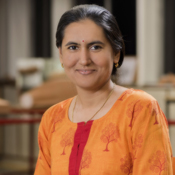About MITID

A place that fuses traditional arts & sciences to contemporary technologies!
Our world is changing fast. We are living through a period of great political, social and technological disruption. The world is looking for change that can be brought through learning and education at institutes that bring quality and advancement for now and in the future.
MIT Institute of Design has been at the forefront of design education in India since 2006 and we are determined to play a leading role in the years ahead. Set up as part of the MAEER’s group under guidance of design thought leaders like Prof. Kumar Vyas and Prof. Dhimant Panchal, the foundation of the institute has been well established with its strong leadership, learning pedagogy, experienced design faculties and practitioners.
MITID has successfully transitioned into being a constituent of MIT ART, DESIGN & TECHNOLOGY UNIVERSITY established by government of Maharashtra through ACT XXXIV 2015. With a decade plus of excellence and pursuance of one of our future aspirations, MIT Institute of Design with 1300+ creative minds on campus and 1000+ alumni professionals have added a further dimension to the programmes of design learning at our campus. The learners and faculty mentors have registered their presence by winning awards in various categories at national & international levels, including prestigious 2 Red dot awards won by our alumni and more than 20 design registrations. MIT Institute of Design is working closely with the national & international design community, being a member of CUMULUS, WDO (World Design Organization) and collaborations with more than 10 reputed Universities across the world. The concept of the Design Habitat is a logical and organic extension of our stated philosophy that ensures a total generalist ambience to enable design learning. It would evolve as an overarching concept around the functional framework of the Design Institute which remains an integral component of the Habitat. It is into this kind of stimulating and inspirational environment that mentors from various design related disciplines are invited to interact with the design learners and challenge their young minds to explore newer territories that should complement and reinforce their ongoing design learning. The mentors ensure that the level of interaction is such that it eventually leads to a learning that is comprehensive, sustained and focused in depth, and directly or indirectly design related.
Philosophy

Education at MIT Institute of Design has been thought in a very broad manner to belong to three domains.
The first is the domain of skill. These are those design skills and design tools that should help students communicate convincingly the outcome of every stage of the design process. For this, they will learn to employ all necessary media and materials. If one has to look for a concept from the Indian philosophy that has an equivalence with this domain, that would be the concept of Sadhan.
The second is the domain of knowledge. It pertains the knowledge base the students must acquire from subject areas of varying nature. From this base, should flow meticulously gathered and researched information needed during the entire problem solving process. Again, an equivalent concept from the Indian philosophy to represent this domain would be Sadhana.
It is the third domain of formation that becomes the vital core of the design process. The total and composite learning from this domain is meant to make students think laterally and innovatively, develop, design concepts and translate the concept into a tangible form which in fact is the very solution of the stated problem of design. The equivalent concept from the Indian philosophy obviously, is Sadhya.






























































